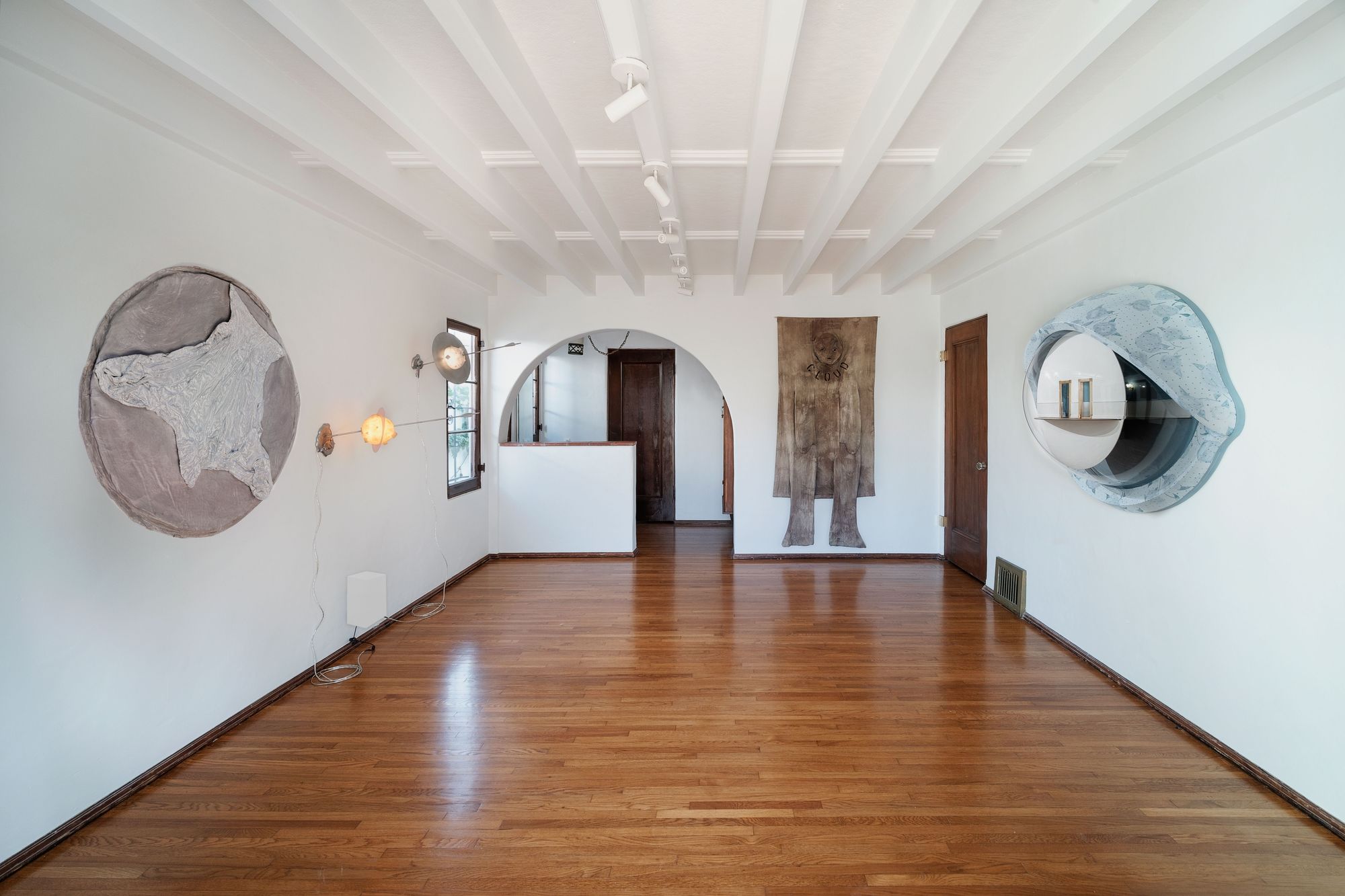
Shell at Del Vaz Projects. Photo courtesy of Del Vaz Projects. Photo: Exhibit View.

Shell at Del Vaz Projects. Photo courtesy of Del Vaz Projects. Photo: Exhibit View.
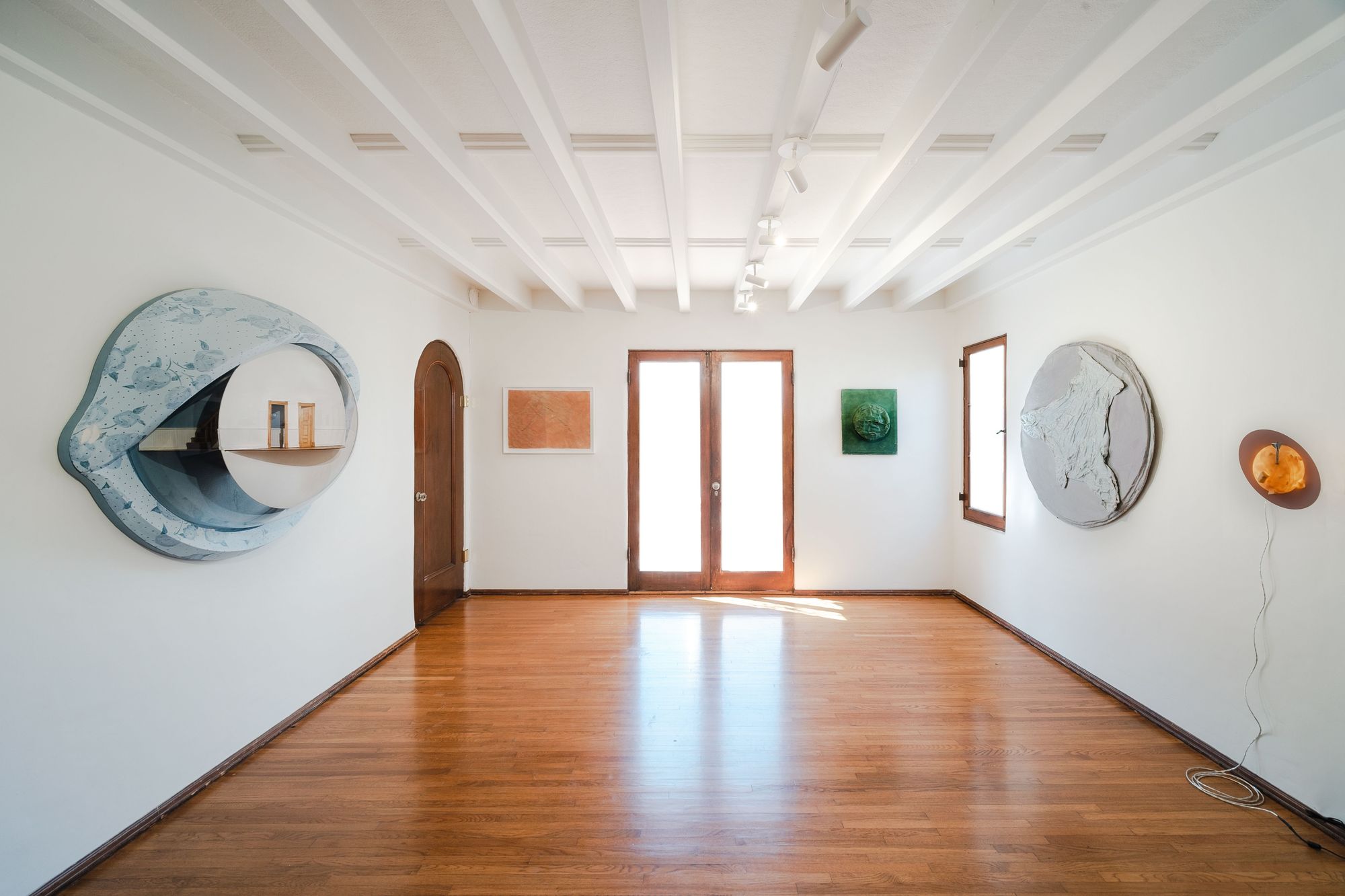
Shell at Del Vaz Projects. Photo courtesy of Del Vaz Projects. Photo: Exhibit View.
Jay Ezra Nayssan founded Del Vaz Projects, which gets its name from the Farsi phrase دست و دلباز (dæst ō del bāz) for open-handed and open-hearted, in 2014. The intimate exhibition platform’s programming has always centered the domestic — first located in a guest bedroom of Nayssan’s west Los Angeles apartment, it’s now situated in his Santa Monica home. Architect Frank E. Bivens built the house in 1929, and it was once Shirley Temple’s childhood home. It’s a space that is serendipitously astute for the context of its current project Shell, an exhibition of works by Heidi Bucher (1926–1993), Olivia Erlanger (b. 1990), and Nicola L. (1932–2018). Bucher lived nearby in Los Angeles with her then-husband and their two sons while she was working on her now iconic Bodyshells, a series of material-body experiments, a precursor is featured in this exhibition, that she made in collaboration with her husband in 1972. In a chance encounter, Erlanger once worked with L’s grandson on a film shoot. In addition to these cosmic links between Del Vaz’s guests and the space itself, Nayssan identified shells and skins as the throughline across the works and grounding points for understanding home, as an architectural and bodily construction but also the emotional space we experience with others.

Heidi Bucher, Untitled, 1978-1981. Photo courtesy of Del Vaz Projects. Photo: Exhibit View.
Throughout her life, Bucher repeated the words “Rooms are shells, they are skins. Peel off one skin after the other, discard it…” Beyond the material differences of shells versus skins, which Nayssan outlines as “hard versus soft, impenetrable versus porous, stiff versus malleable,” they are both structures of enclosure for protection, concealment, and adornment. They are in many ways integral aspects of our being, shaping our identities and reinforcing the performance of our outward-facing selves and who we want to become. Bucher’s Untitled (1978-81) is a remnant of a body of foam works that she worked on throughout her life, deflated to resemble one of her wearable sculptures from Bodyshells. A dragonfly, a recurring motif in her work and a symbol of transformation, emerges from the flattened grey iridescent sphere.
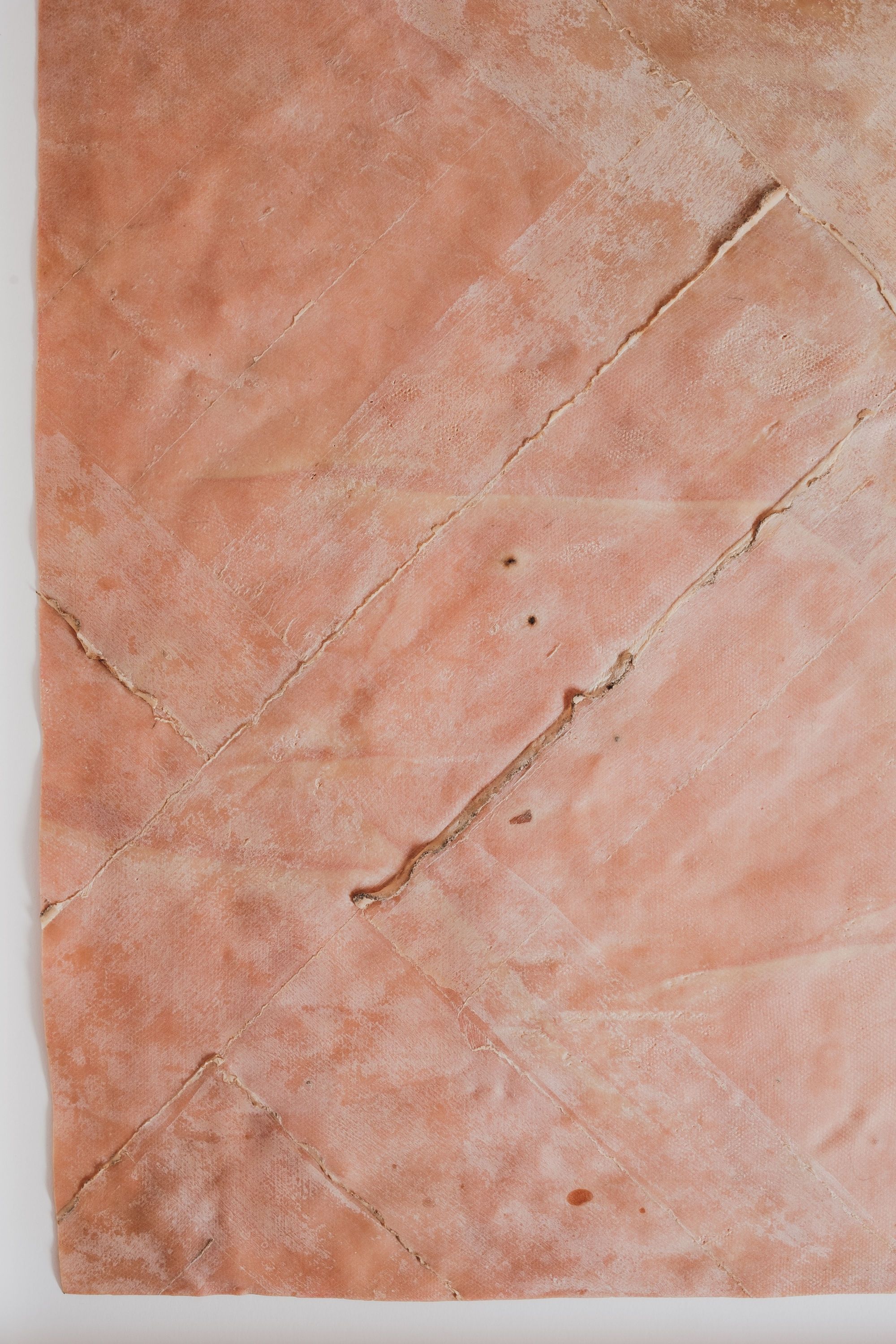
Detail of Heidi Bucher's 16 Der Parkettboden des Herrenzimmer in Wülflingen, Winterthur, 1979. Photo courtesy of Del Vaz Projects. Photo: Exhibit View.

Heidi Bucher's 16 Der Parkettboden des Herrenzimmer in Wülflingen, Winterthur, 1979. Photo courtesy of Del Vaz Projects. Photo: Exhibit View.
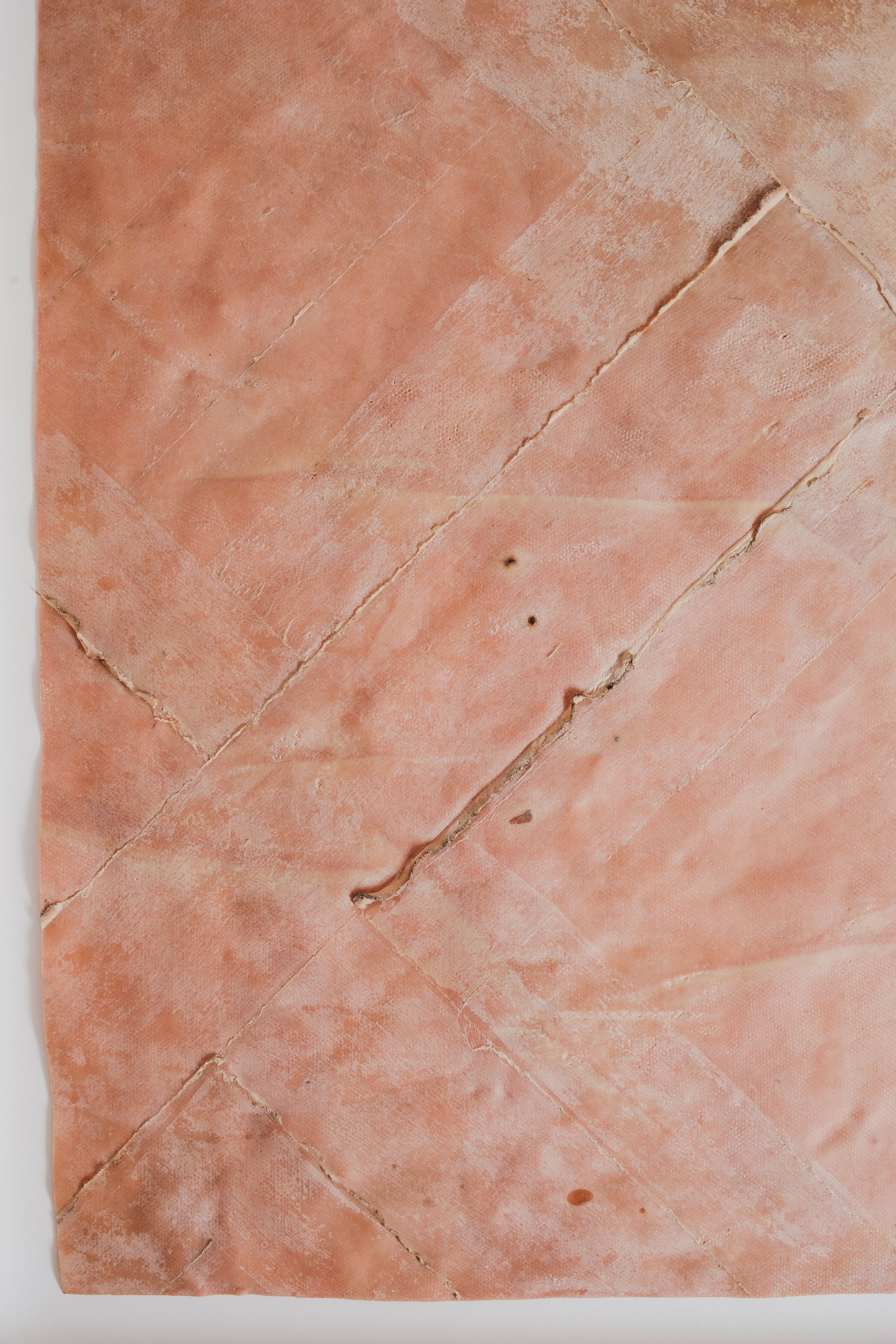
16 Der Parkettboden des Herrenzimmer in Wülflingen, Winterthur (1979), continues this animalistic story of rebirth, shedding layers like a snake. In her “skinning” series, she applied latex on the walls, floors, and furniture in personally and historically charged locations to create a visceral record of the space. The framed cut on the walls of Del Vaz is a pull of her father’s study in her childhood home. By excising a sample with the same amount of care by which a physician biopsies a patient, Bucher confronts the social divisions of 19th century bourgeois engineering by softening and decontextualizing the traditionally patriarchal space of the domestic study or “herrenzimmer.” For Nayssan, Bucher’s process of applying latex and peeling it away “establishes a haptic quality to architecture and a plea towards skin in architecture” that goes beyond a purely archival desire. In physically transcribing a structure, Bucher creates a specter of the built environment that folds in a deeper understanding of memory through touch.
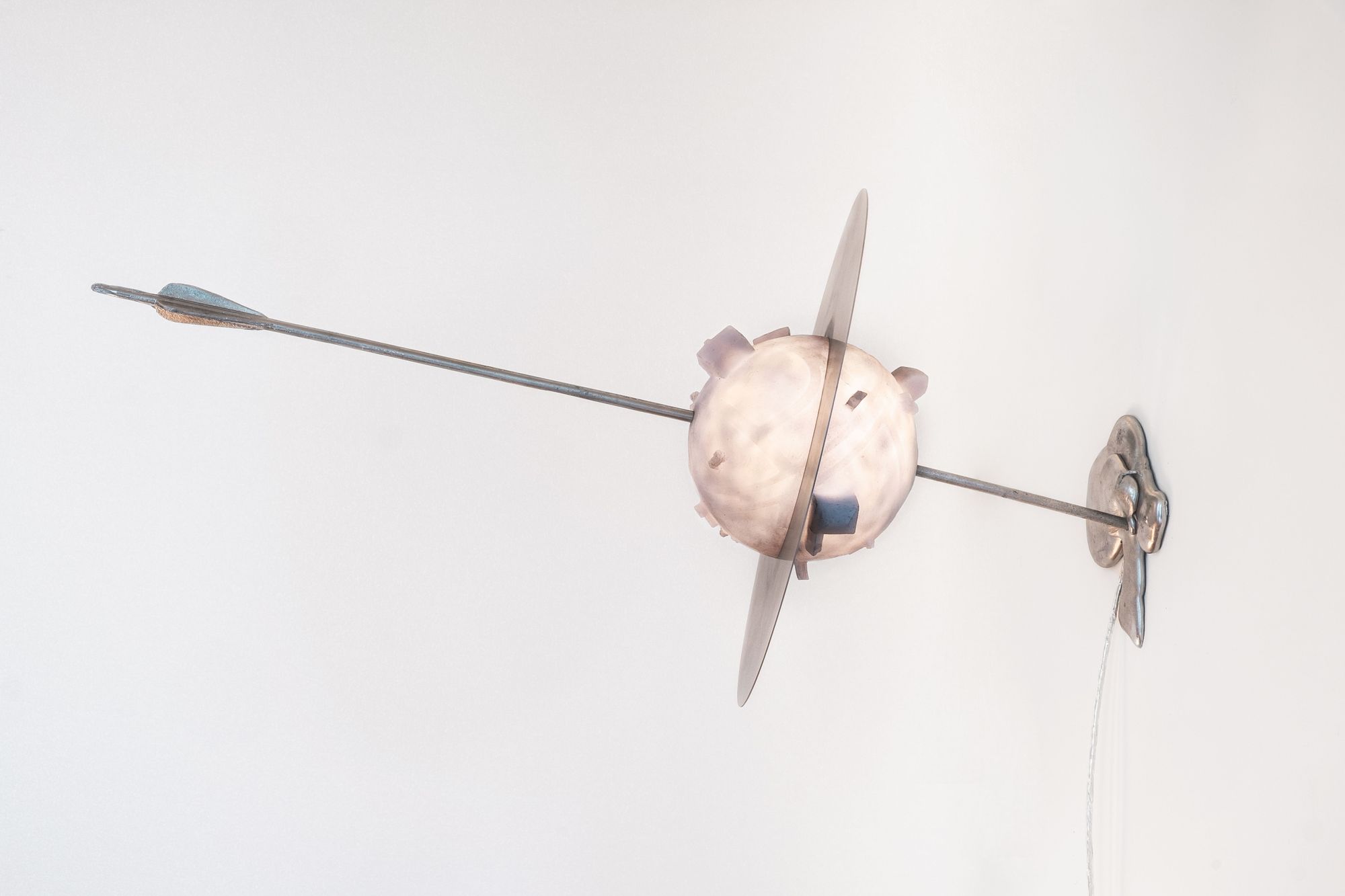
Detail of Olivia Erlanger, 39.31037776068422, -123.79876400034462, 2022. Photo courtesy of Del Vaz Projects. Photo: Exhibit View.
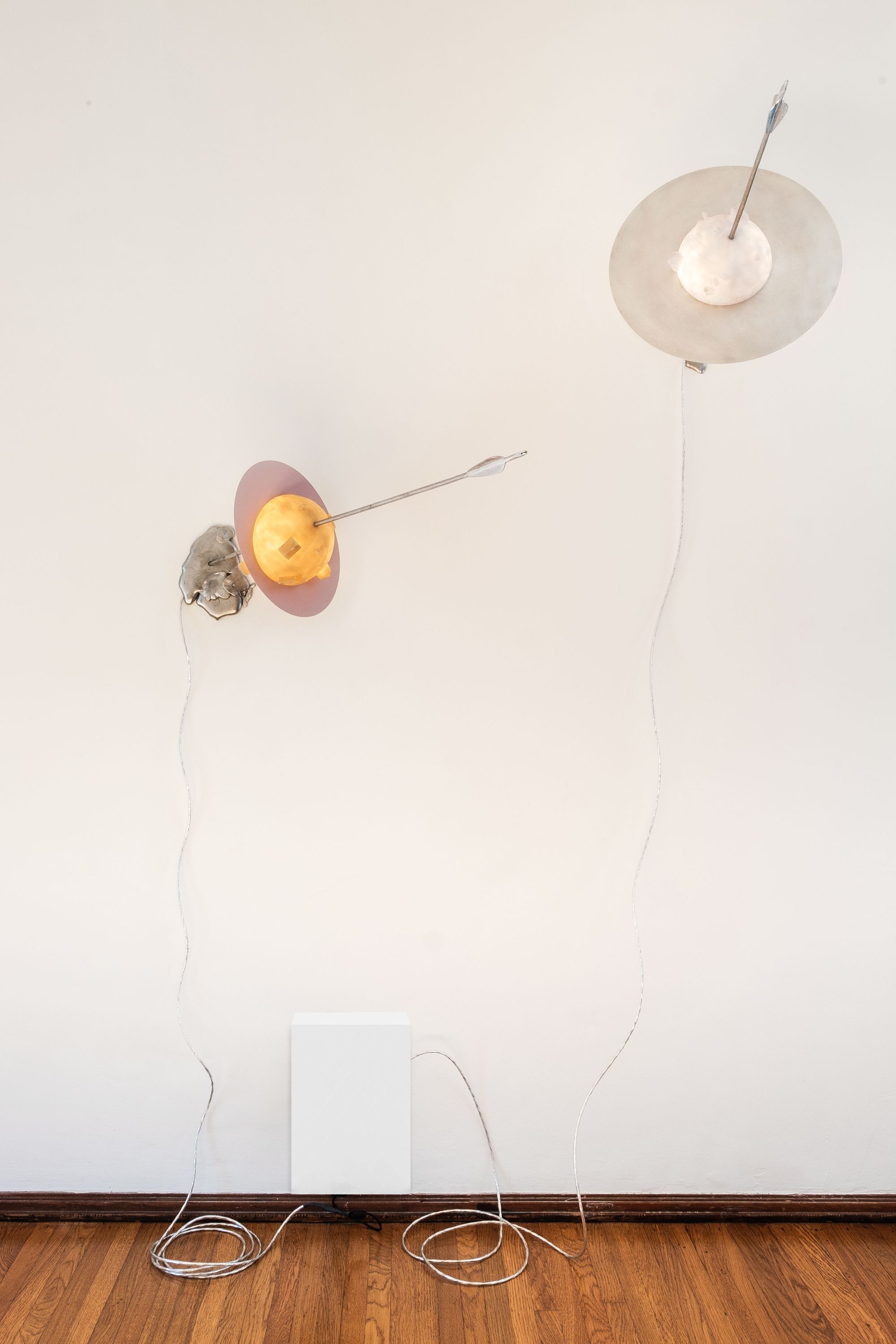
Olivia Erlanger, 39.31037776068422, -123.79876400034462, 2022. Photo courtesy of Del Vaz Projects. Photo: Exhibit View.
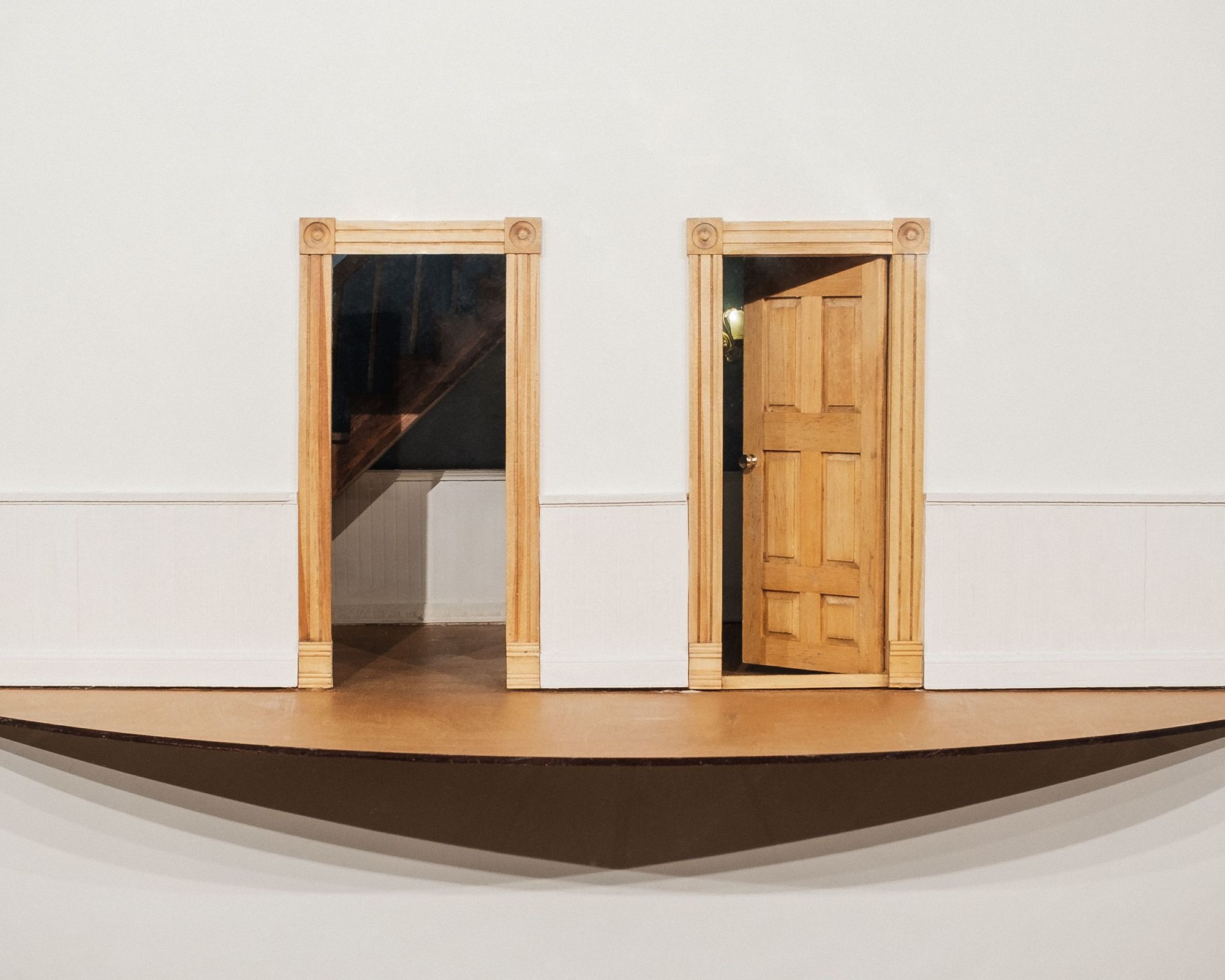
Detail of Olivia Erlanger's Act I, 2022. Photo courtesy of Del Vaz Projects. Photo: Exhibit View.
Erlanger continues this legacy of deconstructing prevailing notions of home that hinge on gendered expectations of bourgeois domestic life. Two silicone and flesh-like planet sculptures 1.3521, 103.8198 and 39.31037776068422, -123.79876400034462 (both 2022) are pierced with a metal arrow, shattering their projection of a glowing suburban topography. While modern suburbia exhibits a uniform regularity that holds profit over consideration for public and private life, it is reigned by an outward presence of order. The regularity of urban planning both models and reinforces normative conceptions of a family unit. For Erlanger, whose planets and home in Act I (2022) are devoid of people, it is the architectural shells of these structures that set the stage for a new set of references for home. Cut open at a cross section, split and encased within a large eyelid and plexiglass lens, Act I is an empty space to traverse, inhabit, and fill. The eye is the home of our mind, the space to imagine the types of structures that should hold ourselves and those we care about.
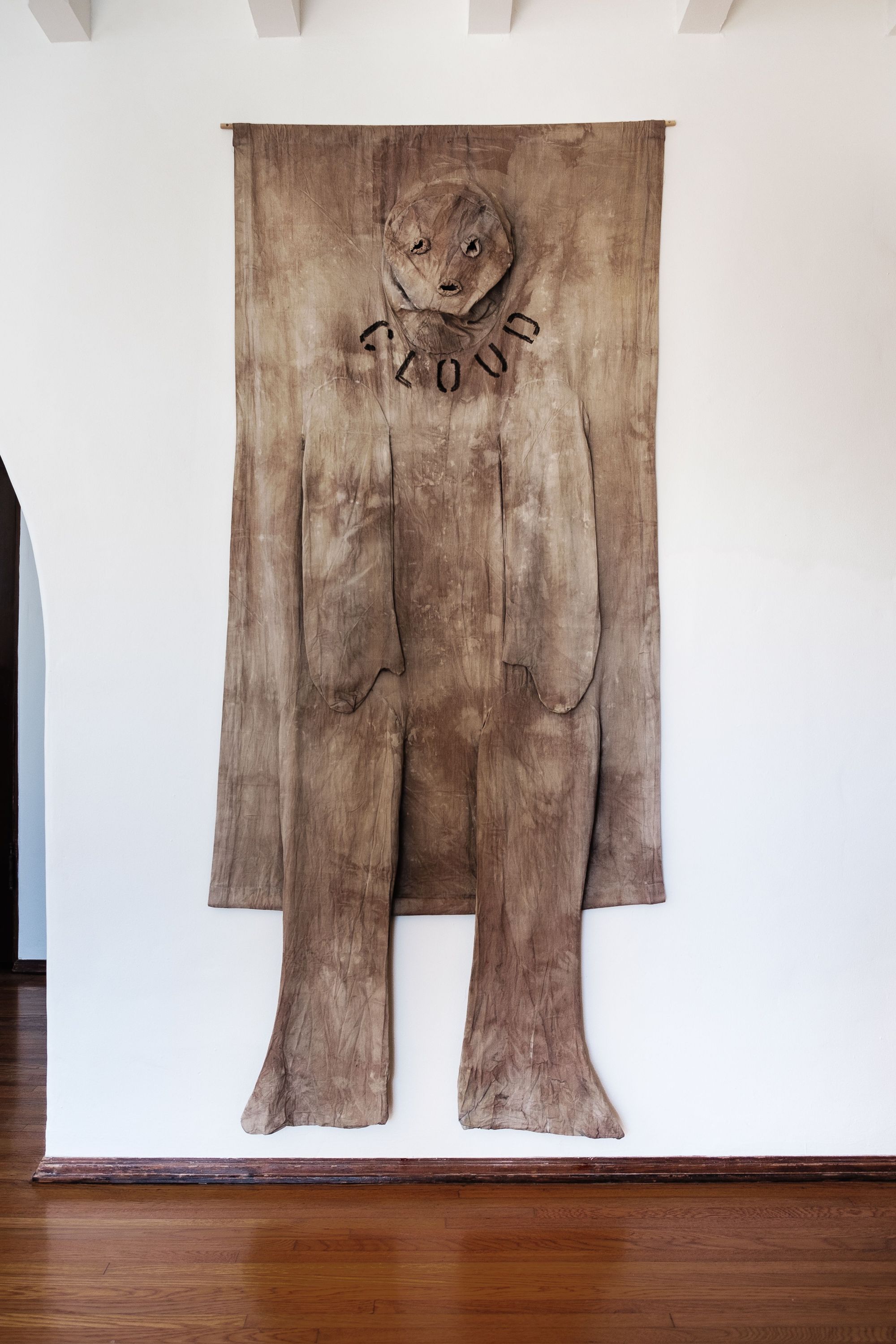
Nicola L., Cloud, 1974-78. Photo courtesy of Del Vaz Projects. Photo: Exhibit View.
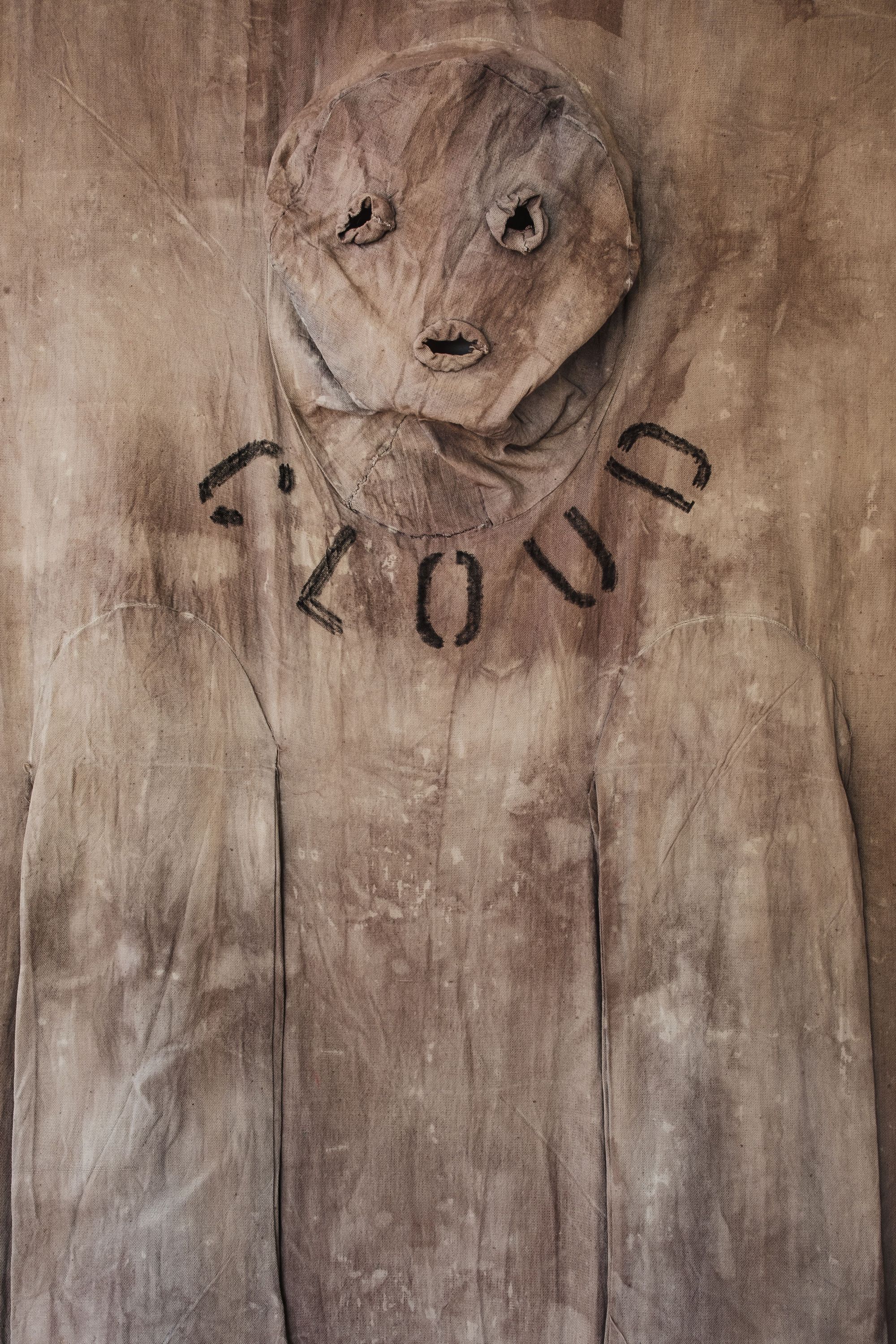
Detail of Nicola L., Cloud, 1974-8. Photo courtesy of Del Vaz Projects. Photo: Exhibit View.
L is celebrated for her more functional art directed towards the objectification of women’s bodies, but it is her long-running series Pénétrables, a term coined by art critic Pierre Restany, that through a contemporary lens could be seen as her most subversive. L produced the series by affixing legs, arms, and faces onto the surfaces of canvas, cotton, and vinyl to create a distorted suit for individuals and collective skins for groups. Each “coat” was labeled with a different natural element, such as sky, earth, sun, and sea. Shown here, Cloud (1974-78), a full-body Pénétrable inscribed with the word “cloud,” is placed alongside an untitled green head from the late nineties. Initially conceived to be worn as a form of second skin that makes viewers reconsider individual subjectivities, when looked at today Nayssan believes they are a “prompt (for) us to shed our individual identities in exchange for a share of a collective skin.” Unlike other works that highlight biologically female body parts, the Pénétrables blankets the body in a unified form, suggesting a non-binary or genderqueer future. The Pénétrables, like the other works in the show, are empty vessels waiting to be filled by bodies. In absence, the works allow us to imagine new futures for these forms — of domestic homes, of women’s bodies, of both visible and invisible gendered constructions of identity and architecture.